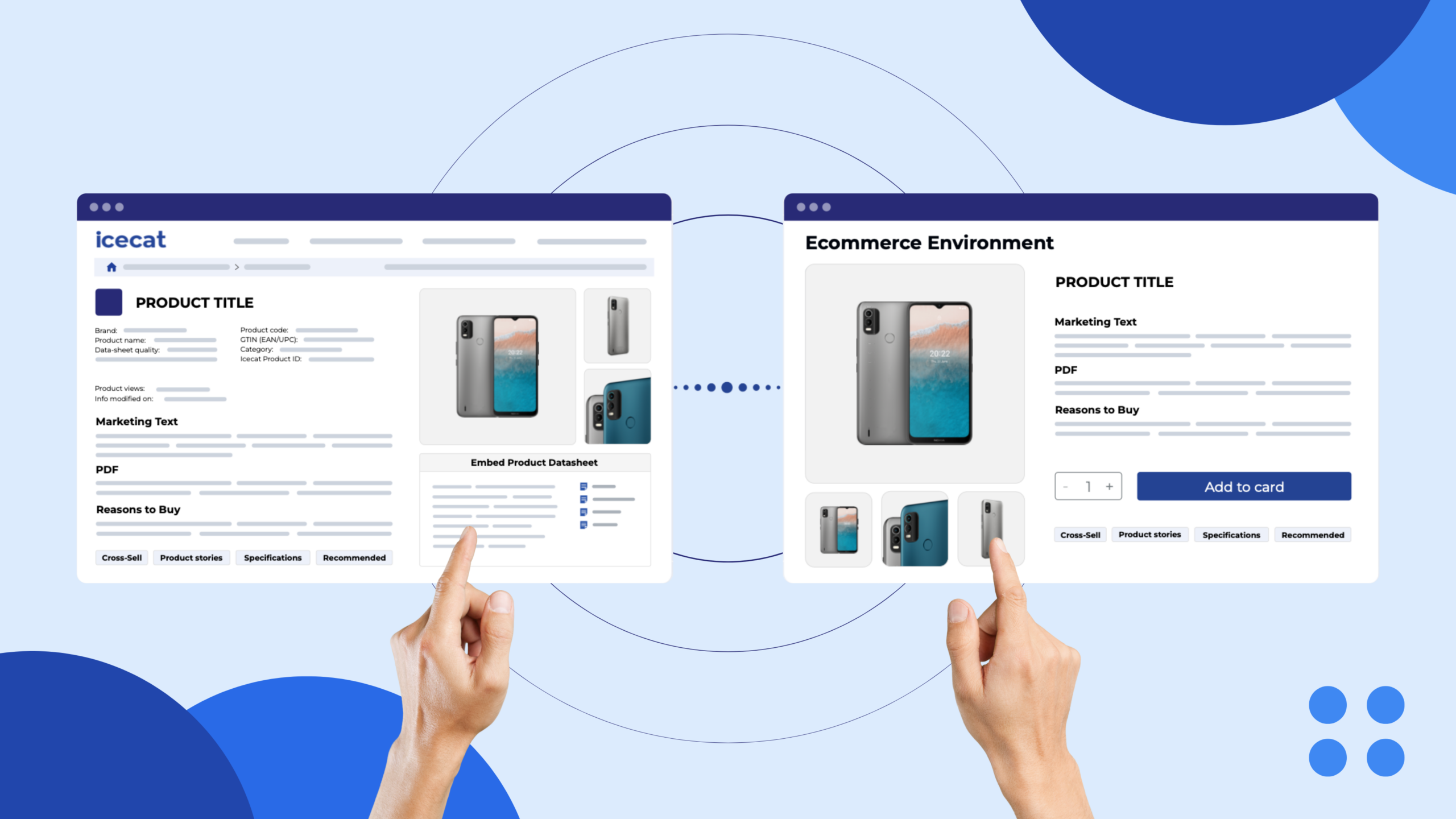Syndicated data transforms how retail managers and e-commerce businesses succeed, offering a decisive advantage in today’s competitive market. But what exactly is syndicated data, and how can it help your business grow? If you’re ready to streamline retail data management, optimize your digital shelf, and boost efficiency, this guide is here to help.
We’ll walk you through:
- The basics of product data syndication
- Practical tips for implementation
- How tools like PIM (Product Information Management) can help your e-commerce business
With the right strategies and platforms in place, syndicated data can become your secret weapon for smarter decision-making and long-term success. Let’s dive in and explore how to make it work for you!
What Is Syndicated Data in Retail?
Syndicated data in retail refers to standardized, structured information about products and markets that is shared across multiple sales channels. It ensures accuracy, compliance, and consistency in product information while enabling businesses to make data-driven decisions.
Why Is It Important?
Retailers and e-commerce businesses face the challenge of catering to diverse marketplaces with unique requirements. Managing product listings across platforms like Amazon, Walmart, and social media can lead to errors, inconsistencies, and inefficiencies if done manually. Syndicated data resolves these problems by:
- Ensuring accurate product information across all touchpoints.
- Improving customer experiences with consistent, enriched content.
- Enhancing operational efficiency by reducing manual input.
Understanding Product Data Syndication
The term Product Data Syndication (PDS) refers to the process of distributing product information across multiple sales channels (marketplaces, e-commerce platforms, resellers, etc.). PDS ensures relevant, localized, and compelling product content reaches the right audience.
How It Works
1. Data Centralization: Collecting and organizing product information in one source, typically via a PIM software, or leveraging Icecat Brand Cloud, a free PIM platform that allows brands to efficiently manage and distribute their product content. Icecat captures and standardizes data using advanced methods like API integrations, ETL processing, and web crawling, ensuring high-quality, consistent information for seamless syndication across retailers and marketplaces.
2. Data Standardization: Adapting product data to meet the standards of each platform (e.g., Amazon has specific guidelines for descriptions and images) or using Icecat, which standardizes product content by transforming brand data into structured Product Datasheets (PDS). Icecat ensures seamless integration across resellers and marketplaces, aligning with global standards like GS1, Amazon, and Google to enhance searchability and discoverability.
3. Distribution: Sending the tailored product information to the respective sales channels or utilizing Icecat to streamline syndication. Once a brand’s product data is collected and standardized, Icecat makes it available to its extensive reseller network. Channel partners can easily access and integrate this content into their e-commerce environments. Resellers can download the data in multiple formats (XML, JSON, CSV, JavaScript) or leverage Icecat’s plug-and-play integrations for Shopify, WooCommerce, Magento, and more. With real-time updates, brands ensure their product information remains accurate, consistent, and optimized for all sales channels.

Best Practices for Effective Product Data Syndication
To harness the full potential of syndicated data, follow these best practices:
Choose the Right Channels
Focus on the sales platforms most relevant to your audience. Analyze data on your customers’ shopping behaviors and prioritize channels that align with their preferences.
Pro tip: Overloading every possible channel can dilute your impact. Instead, pick fewer, high-performing channels and dominate them effectively.
Use Product Content Management Tools
Product content management solutions like Icecat Brand Cloud simplify syndication by centralizing, enriching, and distributing product information efficiently. Key features include:
- Complex Data Enrichment: Enhance product listings with high-quality images, videos, marketing text, and A+ content.
- Real-Time Data Validation: Prevent errors and maintain accuracy with automated checks and structured formatting.
- Easy Content Distribution: Resellers can access product data in multiple formats (XML, JSON, CSV, JavaScript) or integrate via Icecat’s add-ons for Shopify, WooCommerce, Magento, and more.
- Controlled Access & Compliance: Manage reseller access, set product release dates, and ensure legal compliance with Icecat’s Digital Rights Management (DRM) system.
Common Pitfalls to Avoid
Not all syndication strategies yield success. Watch out for these common mistakes:
1. Trying to Syndicate Everywhere
Expanding across multiple sales channels may seem beneficial, but it’s not always the best strategy. While relying on a single platform can limit customer reach, managing numerous channels comes with its own challenges. Each marketplace has unique content requirements, requiring frequent updates and adjustments, which can become overwhelming.
To streamline this process, many businesses turn to Product Information Management (PIM) solutions, which enable automated product content syndication, ensuring consistency and efficiency across all platforms.
2. Don’t Overcomplicate Your Content
While it’s important to provide detailed product information, overwhelming customers with too much content can be counterproductive. Long descriptions, excessive technical details, or irrelevant data can confuse or deter potential buyers. It’s crucial to strike a balance between comprehensive information and simplicity, ensuring that the key product attributes are highlighted while maintaining clarity.
Content management solutions help streamline and optimize content, ensuring it’s concise, relevant, and tailored to each channel’s needs, enhancing the customer experience across all touchpoints.
3. Don’t Neglect Consistency Across Channels
Inconsistent product content across various platforms can confuse customers and damage your brand’s reputation. If product descriptions, images, or specifications differ from one channel to another, it can lead to mistrust and abandoned purchases. Maintaining uniformity across all sales channels is key to delivering a cohesive brand experience.
Content management solutions help ensure consistency by centralizing your product content, making it easy to manage and distribute standardized information across all platforms, reducing the risk of discrepancies.
How Icecat Solves Syndication Challenges
If managing syndicated data sounds overwhelming, Icecat offers a complete solution to simplify it. Here’s how:
- End-to-End Automation: Icecat eliminates manual tasks and error-prone processes.
- Channel-Specific Optimization: Our advanced tools tailor product data to fit the unique requirements of every platform.
- Enhanced Content Syndication: From data validation to content enrichment, Icecat ensures your listings are accurate, polished, and ready to convert.
Icecat simplifies the complexities of product syndication, allowing you to focus on what matters most—growing your business. Reach out to us today, and let’s explore how we can streamline your content syndication process!
Irina is a Digital Marketing Lead with a passion for creating impactful marketing strategies that drive brand success. When she’s not crafting campaigns, she enjoys writing, traveling to new destinations, discovering exciting new things, and seeking outdoor adventures.



